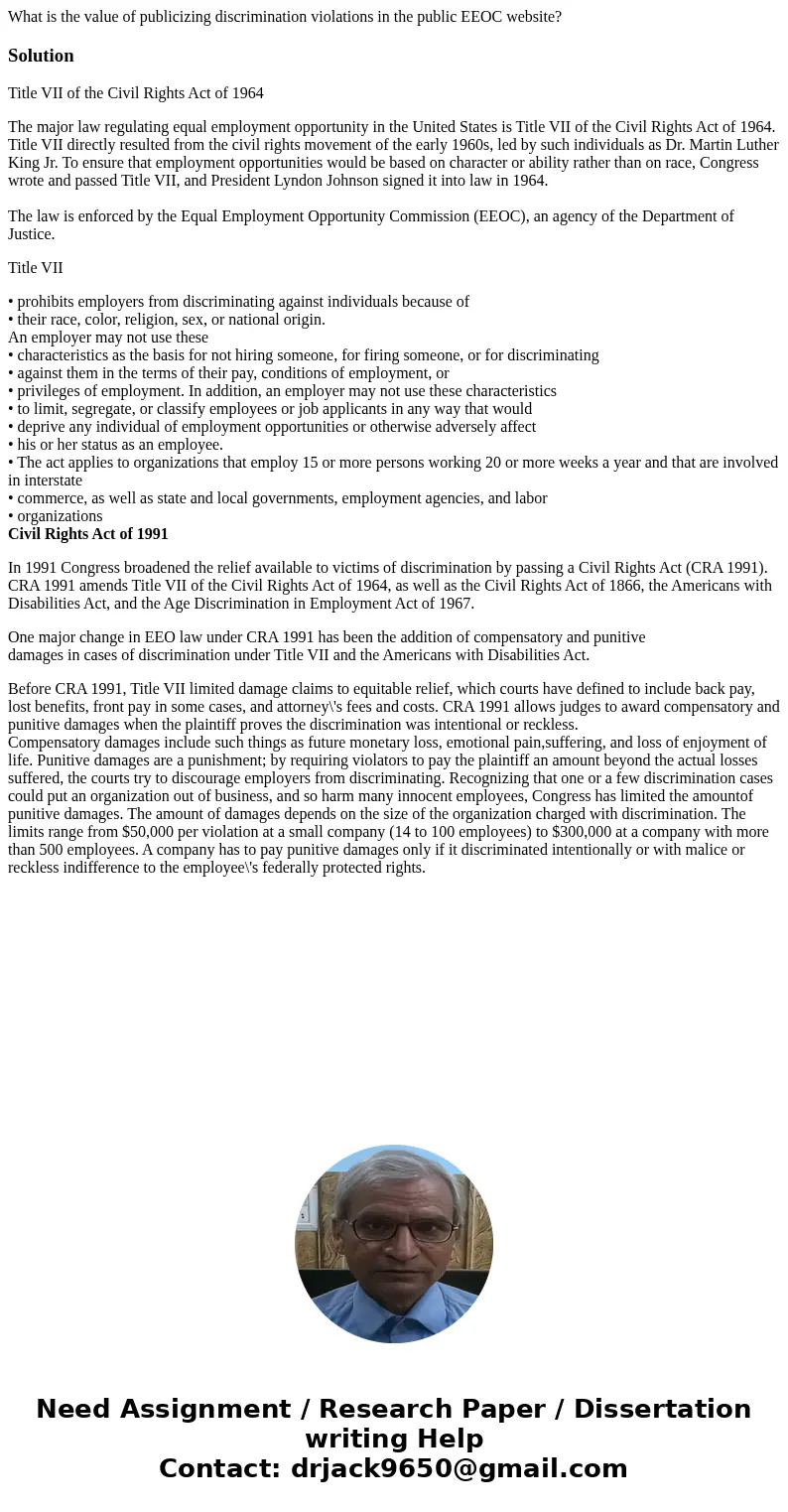What is the value of publicizing discrimination violations i
What is the value of publicizing discrimination violations in the public EEOC website?
Solution
Title VII of the Civil Rights Act of 1964
The major law regulating equal employment opportunity in the United States is Title VII of the Civil Rights Act of 1964. Title VII directly resulted from the civil rights movement of the early 1960s, led by such individuals as Dr. Martin Luther King Jr. To ensure that employment opportunities would be based on character or ability rather than on race, Congress wrote and passed Title VII, and President Lyndon Johnson signed it into law in 1964.
The law is enforced by the Equal Employment Opportunity Commission (EEOC), an agency of the Department of Justice.
Title VII
• prohibits employers from discriminating against individuals because of
• their race, color, religion, sex, or national origin.
An employer may not use these
• characteristics as the basis for not hiring someone, for firing someone, or for discriminating
• against them in the terms of their pay, conditions of employment, or
• privileges of employment. In addition, an employer may not use these characteristics
• to limit, segregate, or classify employees or job applicants in any way that would
• deprive any individual of employment opportunities or otherwise adversely affect
• his or her status as an employee.
• The act applies to organizations that employ 15 or more persons working 20 or more weeks a year and that are involved in interstate
• commerce, as well as state and local governments, employment agencies, and labor
• organizations
Civil Rights Act of 1991
In 1991 Congress broadened the relief available to victims of discrimination by passing a Civil Rights Act (CRA 1991). CRA 1991 amends Title VII of the Civil Rights Act of 1964, as well as the Civil Rights Act of 1866, the Americans with Disabilities Act, and the Age Discrimination in Employment Act of 1967.
One major change in EEO law under CRA 1991 has been the addition of compensatory and punitive
damages in cases of discrimination under Title VII and the Americans with Disabilities Act.
Before CRA 1991, Title VII limited damage claims to equitable relief, which courts have defined to include back pay, lost benefits, front pay in some cases, and attorney\'s fees and costs. CRA 1991 allows judges to award compensatory and punitive damages when the plaintiff proves the discrimination was intentional or reckless.
Compensatory damages include such things as future monetary loss, emotional pain,suffering, and loss of enjoyment of life. Punitive damages are a punishment; by requiring violators to pay the plaintiff an amount beyond the actual losses suffered, the courts try to discourage employers from discriminating. Recognizing that one or a few discrimination cases could put an organization out of business, and so harm many innocent employees, Congress has limited the amountof punitive damages. The amount of damages depends on the size of the organization charged with discrimination. The limits range from $50,000 per violation at a small company (14 to 100 employees) to $300,000 at a company with more than 500 employees. A company has to pay punitive damages only if it discriminated intentionally or with malice or reckless indifference to the employee\'s federally protected rights.

 Homework Sourse
Homework Sourse